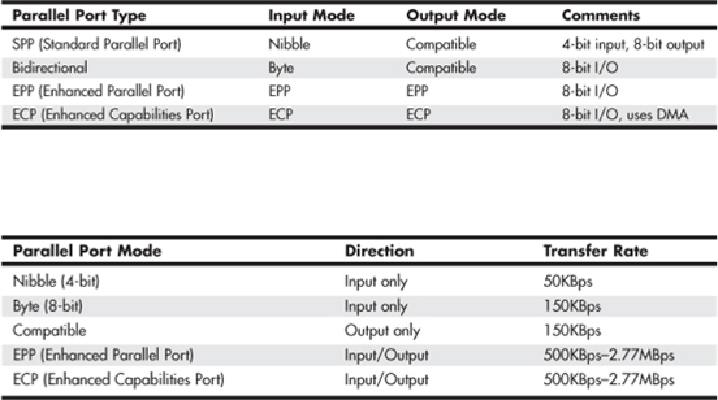Hardware Reference
In-Depth Information
Table 14.16 Types of IEEE 1284 Ports
The 1284-defined parallel port modes are shownin
Table 14.17
,which also showsthe ap-
proximate transfer speeds.
Table 14.17 IEEE 1284 Parallel Port Modes
Each of the port types and modes is discussed in the following sections. These modes can
be selected via the BIOS Setup in motherboards with built-in parallel ports.
Standard Parallel Ports
Older systems did not have different types of parallel ports available. The only available
port was the parallel port that was used to send information from the computer to a device
such as a printer. The unidirectional nature of the original PC parallel port is consistent
withitsprimaryuse—thatis,sendingdatatoaprinter.Thereweretimes,however,whenit
was desirable to have a bidirectional port—for example, when it was necessary to receive
feedback from a printer, which was common with PostScript printers. This could not be
done easily with the original unidirectional ports.
Althoughitwasneverintendedtobeusedforinput,acleverschemewasdevisedinwhich
four of the signal lines could be used as a 4-bit input connection. Thus, these ports could
do 8-bit (byte) output (called
compatible mode
) and 4-bit input (called
nibble mode
). This
is still common on low-end desktop systems. Systems built after 1993 are likely to have
more capable parallel ports, such as bidirectional, EPP, and ECP.
Standardparallelportsarecapableofeffectivetransferratesofabout150KBpsoutputand
about 50KBps input.

